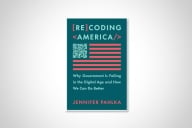You have /5 articles left.
Sign up for a free account or log in.
If you haven’t seen it, check out this interview with an HR officer from the University of Cincinnati. It’s as illuminating as it is frustrating.
The officer, Debbie Hatke, offers bracingly direct answers to some common questions that many of us have had in applying for jobs. The condensed version:
Why are salary ranges often left out of ads? Because everybody wants the top figure, and if people knew how badly many of these jobs pay, they wouldn’t apply. False hope gets them in the door, at which point they can be, as she put it, “upsold” on working in higher ed.
Why do candidates often have to retype information on applications that’s already on the résumé? Because résumés aren’t legally binding, but applications are. Applications are also easier to search because they have a common format.
Why do so many places require idiosyncratic additional materials? Essentially, to screen out what Realtors call lookie-loos. Forcing some actual effort by the applicant screens out unserious applicants.
I’m not sure about her answer to the second question; it seems to me that lying at any stage of the application process could be grounds for dismissal. But the first and third sound true.
The question about salary ranges can cut two ways. At a previous college with a notably low pay scale for early-career professors, we lost a disturbing number of first choices when they heard the salary offer. After one heartbreak too many, I worked with the Faculty Council to put together a list of FAQs that we distributed to finalists before the final round interview. The list included a very realistic estimate of likely starting salaries. The idea was to save everybody time if the salary was a deal breaker. It helped; we lost fewer candidates at the final stage, because they had already come to terms with the reverse sticker shock by that point. I would have preferred the ability to pay more, but that wasn’t an option.
Of course, there are limits to what transparency and “upselling” will achieve when you’re just too far behind the market, particularly in an expensive area. But the point still holds.
I’ll add a question of my own, and what I think the answer would be.
If there’s an internal applicant who’s essentially a shoo-in, can you just say so in the ad and save everyone the time?
The answer is probably twofold. First, “essentially” means different things to different people. A candidate some might consider a shoo-in, others might consider flawed. Second, there are often legal requirements for open searches. Here, too, “open” means different things to different people. Ideally, it should mean a level playing field. Sometimes it amounts to “we’ll solicit applications before we formally name the incumbent.” That entails putting good people through doomed processes to check a box. I’m not a fan, at all, but it happens.
The common denominator to all of these questions is that hiring processes are structured by institutions to meet institutional needs. Whether they meet candidates’ needs is left up to the candidates.
The model assumes reciprocity, but in practice, there’s usually an asymmetry of information. The writer G. K. Chesterton told the story that when he first came to visit America, he was asked on a form at customs whether he advocated the overthrow of the government of the United States. He replied that he’d like to see the place first before offering an opinion. Job candidates are often in a similar spot, being asked to make decisions with very limited information.
I don’t mean any of this to criticize Hatke. She answered the questions she was asked and, as far as I can tell, did so truthfully. The fact that the truth itself is frustrating is not her fault. But it is just a bit bracing.



